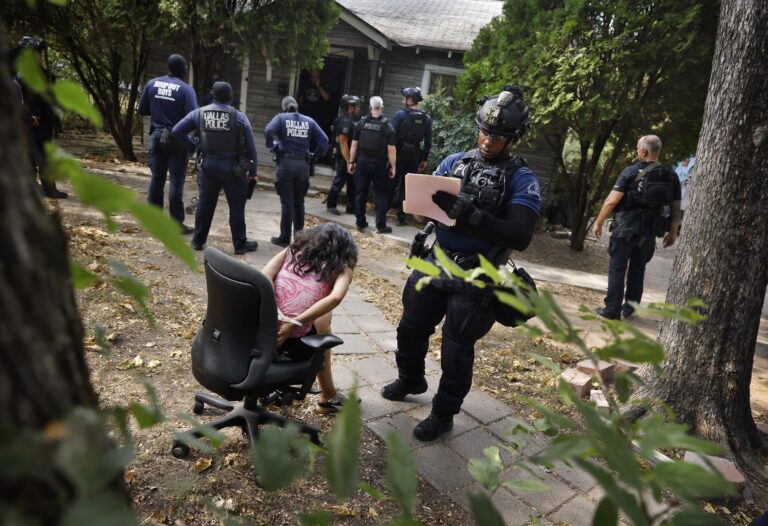Dallas Police Launch Intensive Crackdown on Repeat Offenders to Enhance Community Safety
In a robust initiative to combat ongoing crime challenges, Dallas law enforcement recently detained 98 individuals with extensive criminal backgrounds during a carefully coordinated operation targeting high-crime neighborhoods. This focused campaign aims to break the cycle of repeat offenses by concentrating resources on habitual offenders, thereby improving safety and rebuilding trust within affected communities. The operation utilized a blend of intelligence gathering, community input, and synchronized raids to apprehend suspects involved in a range of crimes, including theft, drug trafficking, and violent acts.
Beyond the immediate arrests, the initiative seeks to establish long-term crime reduction through enhanced surveillance and expanded access to rehabilitation services. Core components of this strategy include:
- Strengthened partnerships with social service agencies to support reintegration
- Focused outreach addressing underlying causes of repeat criminal behavior
- Adoption of analytics-driven policing to anticipate and prevent future offenses
| Offense Category | Number of Arrests | Primary Crime Type |
|---|---|---|
| Burglary | 37 | Property Crime |
| Drug-Related Offenses | 38 | Controlled Substances |
| Violent Crimes | 13 | Assault and Battery |
| Miscellaneous | 10 | Various |
Crime Trends and Behavioral Patterns in Repeat Offender Arrests
Detailed examination of recent criminal activities in Dallas revealed distinct patterns among repeat offenders. Most offenses were concentrated in specific urban districts, predominantly occurring during late-night hours. Property crimes such as burglaries and vehicle thefts were notably prevalent. Utilizing advanced crime mapping and predictive analytics, law enforcement was able to forecast offender movements and optimize operational tactics.
Key behavioral insights include the frequent use of stolen vehicles for rapid escapes and a strong correlation between drug-related motives and financial hardship. Collaborative efforts across precincts produced comprehensive profiles of the 98 detainees, highlighting:
- Predominant age range of 21-36 years
- High incidence of property and drug-related offenses
- Concentration in neighborhoods facing socioeconomic difficulties
| Crime Type | Proportion of Arrests | Typical Time Window |
|---|---|---|
| Burglary | 45% | 10 PM – 2 AM |
| Auto Theft | 25% | 11 PM – 3 AM |
| Drug Offenses | 23% | 8 PM – Midnight |
| Assault and Related Crimes | 7% | 9 PM – 1 AM |
Community Reactions and Consequences of the Dallas Crime Sweep
The recent crackdown has sparked diverse responses across Dallas neighborhoods. Many residents report feeling safer and commend the police for their assertive approach to reducing repeat offenses. Local merchants have noticed increased patronage as public confidence in neighborhood security grows. Conversely, some advocacy organizations urge a balanced strategy that combines enforcement with rehabilitation and social support to tackle the root causes of criminal behavior.
Community feedback highlights:
- Expansion of neighborhood watch initiatives and greater civic participation
- Advocacy for enhanced social programs targeting vulnerable youth and addiction
- Creation of platforms for ongoing dialogue between law enforcement and community representatives
| Focus Area | Community Input | Recommended Actions |
|---|---|---|
| Public Safety | Marked improvement in perceived security | Continue regular patrols and community engagement |
| Social Support | Demand for increased rehabilitation resources | Boost funding for counseling and prevention programs |
| Police-Community Relations | Calls for transparency and open communication | Organize quarterly town hall meetings |
Recommendations for Enhancing Law Enforcement and Preventive Initiatives
To effectively diminish repeat criminal activity and bolster public safety, law enforcement agencies should emphasize integrated intelligence-sharing systems. Developing comprehensive data platforms that unify arrest records, surveillance data, and community reports will facilitate rapid identification and monitoring of habitual offenders. Furthermore, investing in specialized training focused on crisis management and cultural sensitivity will enable officers to build stronger relationships with diverse populations, promoting trust and proactive crime deterrence.
Aligning community-driven prevention programs with policing efforts is crucial for lasting impact. Funding priorities should include:
- Youth engagement initiatives addressing socioeconomic factors like poverty and educational gaps
- Collaborative neighborhood watch programs to enhance local vigilance and reporting
- Mental health intervention services aimed at early support before offenses occur
| Strategy | Anticipated Outcome | Implementation Timeline |
|---|---|---|
| Unified Data Systems | Accelerated offender tracking | Within 6 months |
| Targeted Officer Training | Enhanced community engagement | Within 12 months |
| Youth-Focused Programs | Lower juvenile repeat offenses | Ongoing |
Conclusion
The recent Dallas Police operation, which led to the detention of 98 repeat offenders, highlights a determined effort to reduce crime and improve public safety across the city. While this initiative marks a significant milestone, officials stress the importance of sustained vigilance and community collaboration to address the underlying factors driving criminal behavior. As investigations proceed, law enforcement remains dedicated to dismantling criminal networks and fostering a safer environment for all Dallas residents.







